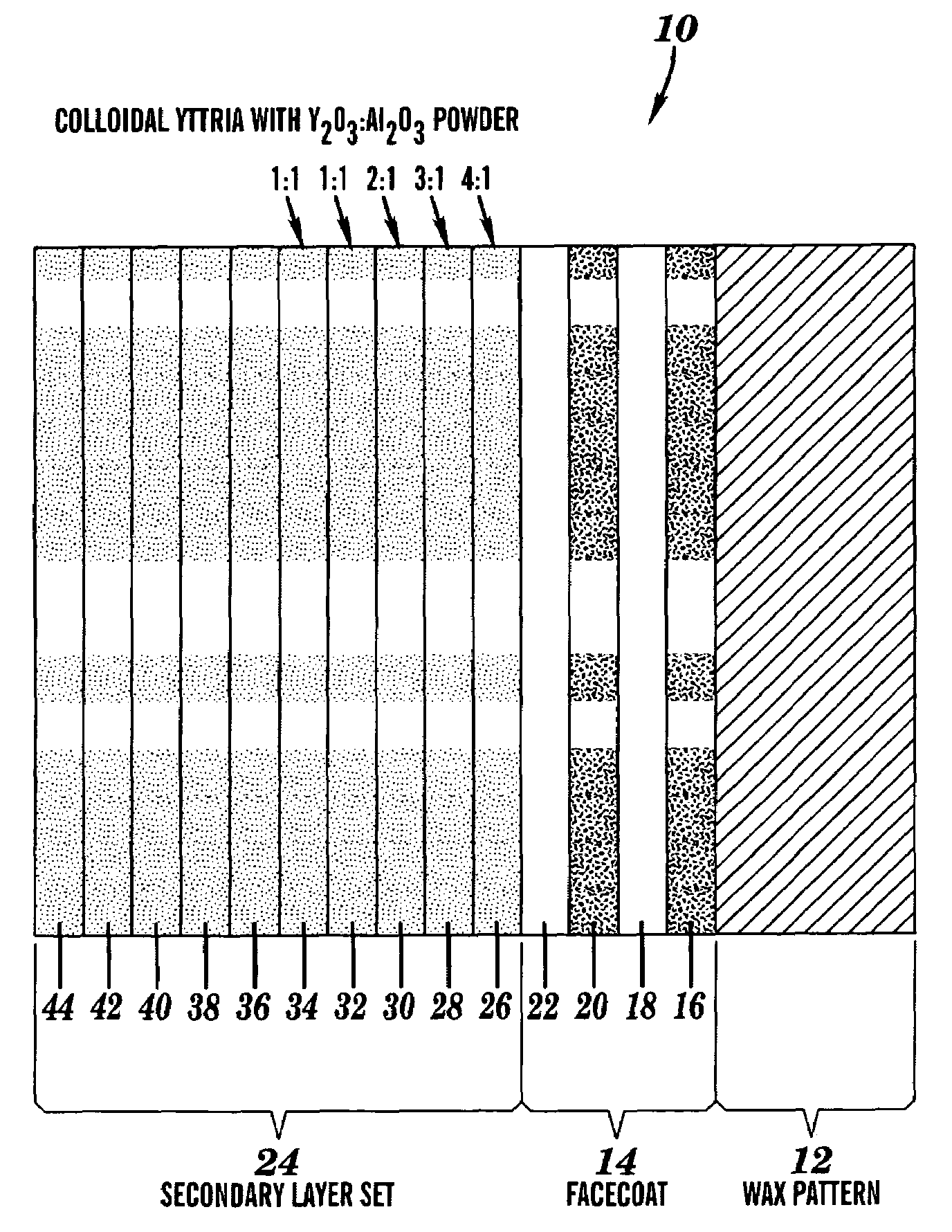Shell mold for casting niobium-silicide alloys, and related compositions and processes
a shell mold and alloy technology, applied in the field of investment casting of niobiumsilicide alloy shell molds, can solve the problems of limiting the casting temperature and the materials which can be successfully cast, serious surface defects in the cast article, and sometimes present drawbacks
- Summary
- Abstract
- Description
- Claims
- Application Information
AI Technical Summary
Benefits of technology
Problems solved by technology
Method used
Image
Examples
Embodiment Construction
[0021]In one embodiment of the present invention, a niobium-silicide material (alloy) is first introduced into a cavity of a shell mold for casting. Suitable niobium-silicide alloys are described in the following patents, which are all incorporated herein by reference: U.S. Pat. No. 5,833,773 (Bewlay et al); U.S. Pat. No. 5,932,033 (Jackson et al); U.S. Pat. No. 6,419,765 (Jackson et al); and U.S. Pat. No. 6,676,381 (Subramanian et al).
[0022]The niobium-silicide alloys usually have a microstructure comprising a metallic Nb-base phase and an intermetallic metal silicide phase (e.g., Nb-silicide). However, they may include one or more other phases as well. The metallic Nb-phase is relatively ductile, while the intermetallic silicide phase is more brittle and stronger. These alloys may be considered to be a composite of a ductile metallic phase and a brittle strengthening phase, wherein the composite is formed in-situ upon solidification of the alloy. (As used herein, “alloy” is meant ...
PUM
| Property | Measurement | Unit |
|---|---|---|
| particle size | aaaaa | aaaaa |
| temperatures | aaaaa | aaaaa |
| melting point | aaaaa | aaaaa |
Abstract
Description
Claims
Application Information
 Login to View More
Login to View More - R&D
- Intellectual Property
- Life Sciences
- Materials
- Tech Scout
- Unparalleled Data Quality
- Higher Quality Content
- 60% Fewer Hallucinations
Browse by: Latest US Patents, China's latest patents, Technical Efficacy Thesaurus, Application Domain, Technology Topic, Popular Technical Reports.
© 2025 PatSnap. All rights reserved.Legal|Privacy policy|Modern Slavery Act Transparency Statement|Sitemap|About US| Contact US: help@patsnap.com


